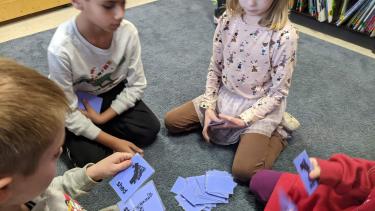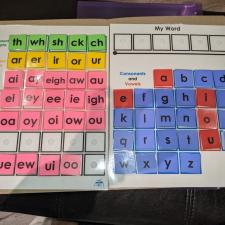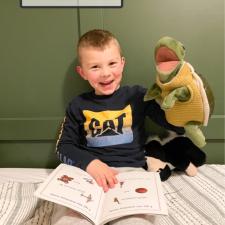
Improving Early Literacy Learning
In our school district's four-year strategic plan, we have targeted improved early learning as a means of impacting student success. At Mathxwí Elementary, all primary classrooms have committed their year to explore practical ways to improve early literacy learning. Our school inquiry question for the year asks, “If we are intentional about making our school a place of hope, healing, and wellness, where personal and cultural identity are honoured and celebrated, will our students’ reading scores show marked improvement by June 2023?” As a team of educators, we have chosen to take the opportunity to participate in the district offering, Changing Results for Young Literacy Learners (CRYLL), with the hope that we will be able to combine practical literacy strategies with social-emotional learning (SEL) to accomplish meaningful and sustainable student success.
In the first term, during parent-teacher conferences, we conducted ‘empathy interviews’. The goal was to help classroom teachers better understand individual student learning needs and build connections with families, strengthening learning support at home. With fresh insight about our students, we gathered as a primary team to delve into our book study, “A Fresh Look at Phonics,” and collaborate on ways that we might better support early literacy learners.
As ideas began to take shape, we quickly realized that our time together, collaborating, sharing resources, planning, and supporting each other was going to be the foundation for success moving forward. Our initial discussions centered around the impact of common language, assessment practices, learning tools, and creating calm, welcoming learning spaces. We encouraged each other with the success we were already seeing from using common literacy resources like Heggerty, sound walls, and Daily 5. We discussed SEL resources, like the C.A.L.M. curriculum that we were currently using in some primary classrooms and had been used previously in other primary classrooms.
Fast forward to the end of January! Comparing reading assessments from the end of last year to the end of term one has given us a boost of enthusiasm, especially considering the marked improvement of some of our struggling readers and our English language learners. The combination of our consistent, targeted instruction, the efforts to create welcoming learning spaces, and our attention to the uniqueness of each learner is showing progress toward our literacy goals.
As we look to the remainder of the year, we continue dreaming about ways to use our resources! We plan to build a primary library of decodable books to complement our extensive collection of levelled readers. Some teachers continue to collaborate on developing direct instruction techniques and creating reading and writing activities to nurture continued literacy growth in their classrooms. Some are working towards developing common assessment rubrics that build from Kindergarten to Grade 3. Others are exploring more ways to meet the unique needs of each learner. Given the growth we have already experienced, we are certain that we will continue to see greater improvement as we support our students and each other.
Elise Davenport, Teacher
Mathxwí Elementary


